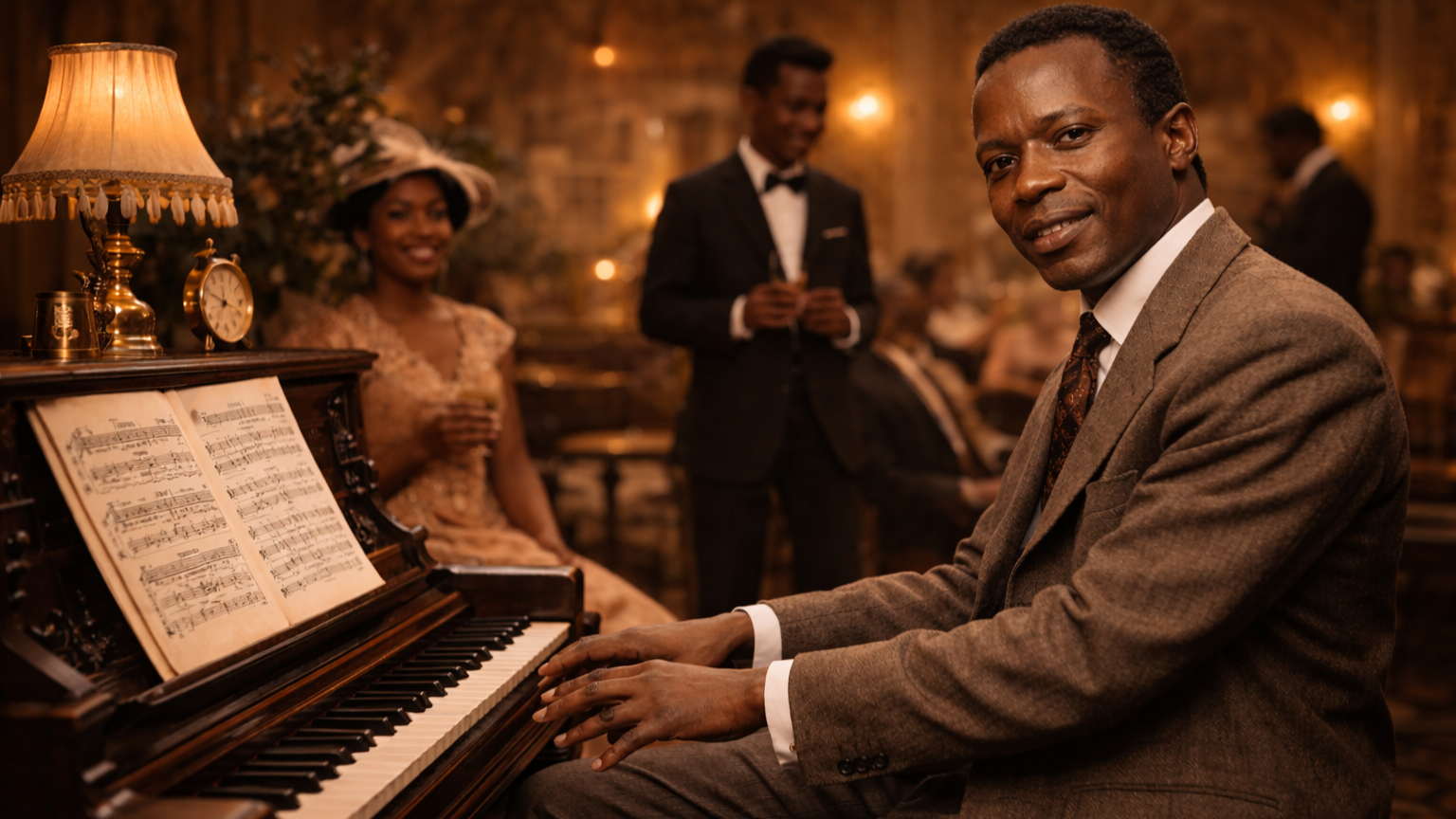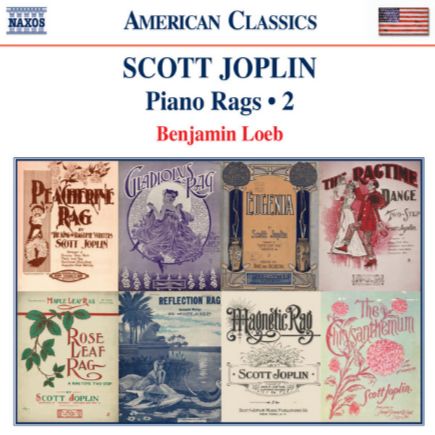Ragtime : fondations rythmiques et héritage structurant du jazz
Un genre fondateur au cœur de la culture afro-américaine
Apparu à la fin du XIXe siècle dans un contexte américain en profonde mutation, le ragtime s’impose comme l’une des premières grandes formes musicales afro-américaines entièrement structurées. Longtemps considéré comme un simple prélude au jazz, il mérite pourtant d’être reconnu comme un genre autonome, exigeant et innovant. Sa force tient à une écriture rigoureuse, à une virtuosité rythmique distinctive et à un sens aigu de la clarté mélodique, révélant une créativité remarquable dans une société encore marquée par les séquelles de l’esclavage.
Un ancrage historique dans une Amérique en transition
Le ragtime naît au croisement de multiples influences: marches militaires américaines, musiques de salon européennes, rythmes africains transmis oralement et traditions populaires afro-américaines. La caractéristique essentielle de cette musique réside dans le contraste rythmique entre une main gauche régulière, quasi mécanique, et une main droite syncopée qui introduit un décalage captivant. Ce principe, appelé “ragged time”, forge la signature du style; il ouvre la voie à une nouvelle manière de concevoir la pulsation et influencera durablement la rhythmicité du jazz naissant.
Une diffusion portée par les technologies musicales de l’époque
Avant la généralisation de l’enregistrement, partitions et rouleaux de pianola assurent la large diffusion du ragtime. Parmi les figures majeures, Scott Joplin s’impose comme le “Roi du Ragtime”. Ses compositions, notamment Maple Leaf Rag et The Entertainer, allient rigueur formelle et inventivité harmonique. À ses côtés, James Scott et Joseph Lamb enrichissent le répertoire en développant une écriture raffinée qui fixe les contours du genre.
Une architecture écrite qui prépare l’avènement du jazz
Totalement noté, le ragtime se distingue du jazz par l’absence d’improvisation; pourtant, il constitue une étape décisive dans la formation du langage pianistique afro-américain. Sa structure en plusieurs sections, inspirée des formes classiques, offre une base solide aux futurs pianistes de jazz. Le vocabulaire rythmique, la précision technique et l’organisation thématique préfigurent l’émergence du style stride, qui prolongera l’héritage du ragtime dans un idiome plus libre et plus expressif.
La transition vers le stride et la modernité pianistique
Au cœur de cette transition, James Price Johnson joue un rôle central. Sa pièce Carolina Shout marque un tournant décisif vers une écriture plus mobile, où la main gauche devient tour à tour pulsation, contrepoint et moteur harmonique. Son influence irrigue l’œuvre de Fats Waller, Willie The Lion Smith, Count Basie, Duke Ellington, Art Tatum et Thelonious Monk, qui y puisent matière à réinventer le langage du piano jazz.
Un héritage vivant et réévalué au fil du temps
Le ragtime connaît un spectaculaire regain de popularité dans les années 1970 grâce au film The Sting (L’Arnaque), qui remet à l’honneur The Entertainer dans une orchestration devenue emblématique. Aujourd’hui encore, ce répertoire demeure une ressource essentielle pour les musiciens et les pédagogues; sa rigueur, sa richesse rythmique et son inventivité formelle continuent de nourrir les explorations contemporaines. Plus qu’un vestige historique, le ragtime apparaît comme un pilier fondateur dont l’influence se prolonge dans le jazz moderne et ses multiples prolongements.
Ragtime: fundamentos rítmicos y herencia estructurante del jazz
Un género fundacional en el corazón de la cultura afroamericana
A finales del siglo XIX, en una sociedad estadounidense marcada por profundas transformaciones, el ragtime emerge como una de las primeras grandes formas musicales afroamericanas plenamente estructuradas. Aunque durante mucho tiempo se lo consideró un simple preludio del jazz, constituye un género autónomo, exigente e innovador. Su fuerza radica en una escritura rigurosa, una marcada creatividad rítmica y un sentido claro de la línea melódica, reflejando la capacidad de creación de músicos que supieron convertir un contexto adverso en un moteur artístico.
Un anclaje histórico en una América en transición
El ragtime nace del cruce de múltiples tradiciones: marchas militares estadounidenses, músicas de salón europeas, ritmos africanos transmitidos oralmente y prácticas populares afroamericanas. Su rasgo fundamental reside en el contraste rítmico entre una mano izquierda estable y una mano derecha sincopada, generando la característica “ragged time”. Esta tensión crea un movimiento dinámico que transforma la concepción de la pulsación y constituye uno de los cimientos rítmicos del jazz incipiente.
Una difusión impulsada por las tecnologías musicales de su tiempo
Antes de la popularización del disco, las partituras y los rollos de pianola aseguran la difusión del ragtime en todo el país. En este contexto, destaca la figura de Scott Joplin, considerado el “Rey del Ragtime”. Sus obras – entre ellas Maple Leaf Rag y The Entertainer – combinan estructura precisa e inventiva armónica. Junto a él, James Scott y Joseph Lamb consolidan un repertorio cada vez más rico y sofisticado.
Una arquitectura escrita que prepara el advenimiento del jazz
Totalmente notado, el ragtime se distingue del jazz por la ausencia de improvisación ; sin embargo, representa una etapa decisiva en la formación del lenguaje pianístico afroamericano. Su estructura en varias secciones, inspirada en las formas clásicas, ofrece una base sólida para los futuros pianistas de jazz. El vocabulario rítmico, la precisión técnica y la organización temática anticipan la aparición del estilo stride, que prolongará la herencia del ragtime en un idioma más libre y expresivo.
La transición hacia el stride y la modernidad pianística
En esta evolución destaca la aportación de James Price Johnson, cuya pieza Carolina Shout representa un punto de inflexión hacia una escritura más ágil. Su influencia es determinante para músicos como Fats Waller, Willie The Lion Smith, Count Basie, Duke Ellington, Art Tatum y Thelonious Monk.
Un legado vivo y reevaluado con el tiempo
El ragtime experimenta un espectacular resurgimiento en la década de 1970 gracias a la película The Sting (El Golpe), que devuelve a primer plano The Entertainer en una orquestación convertida en emblemática. Hoy en día, este repertorio sigue siendo un recurso esencial para músicos y pedagogos ; su rigor, su riqueza rítmica y su inventiva formal continúan alimentando las exploraciones contemporáneas. Más que un vestigio histórico, el ragtime aparece como un pilar fundacional cuya influencia se prolonga en el jazz moderno y en sus múltiples ramificaciones.
Ragtime: fondamenti ritmici e eredità strutturante del jazz
Un genere fondativo al centro della cultura afroamericana
Alla fine del XIX secolo, in una società statunitense attraversata da grandi trasformazioni, il ragtime si afferma come una delle prime forme musicali afroamericane pienamente strutturate. Spesso interpretato come un semplice preludio al jazz, costituisce in realtà un genere autonomo, complesso e innovativo. La sua forza risiede in una scrittura rigorosa, in una marcata creatività ritmica e in una chiarezza melodica che testimoniano la capacità dei musicisti afroamericani di trasformare un contesto difficile in un motore creativo.
Un radicamento storico in un’America in transizione
Il ragtime nasce dall’incontro tra influenze molteplici: marce militari statunitensi, musiche da salotto europee, ritmi africani trasmessi oralmente e pratiche popolari afroamericane. La sua caratteristica principale consiste nel contrasto ritmico tra una mano sinistra stabile e una mano destra sincopata, creando il celebre “ragged time”. Questa tensione introduce un dinamismo nuovo che influenzerà profondamente la concezione del ritmo nel jazz delle origini.
Una diffusione sostenuta dalle tecnologie musicali dell’epoca
Prima dell’affermazione del disco, il ragtime circola ampiamente grazie alle partiture e ai rulli per pianola. Figura centrale, Scott Joplin è noto come il “Re del Ragtime”. Le sue composizioni – tra cui Maple Leaf Rag e The Entertainer – uniscono rigore formale e inventiva armonica. Accanto a lui, James Scott e Joseph Lamb arricchiscono ulteriormente un repertorio che guadagna prestigio e complessità.
Un’architettura scritta che prepara l’avvento del jazz
Interamente notato, il ragtime si distingue dal jazz per l’assenza di improvvisazione ; tuttavia, rappresenta una fase decisiva nella formazione del linguaggio pianistico afroamericano. La sua struttura in più sezioni, ispirata alle forme classiche, offre una base solida ai futuri pianisti jazz. Il vocabolario ritmico, la precisione tecnica e l’organizzazione tematica prefigurano l’emergere dello stile stride, che prolungherà l’eredità del ragtime in un idioma più libero ed espressivo.
La transizione verso lo stride e la modernità pianistica
In questo processo, un ruolo centrale è svolto da James Price Johnson. Con Carolina Shout introduce un approccio più mobile e contrastato, influenzando profondamente musicisti come Fats Waller, Willie The Lion Smith, Count Basie, Duke Ellington, Art Tatum e Thelonious Monk.
Un’eredità viva e costantemente rivalutata
Il ragtime conosce un notevole ritorno di popolarità negli anni Settanta grazie al film The Sting (La Stangata), che riporta in auge The Entertainer in un’orchestrazione divenuta iconica. Ancora oggi, questo repertorio rimane una risorsa essenziale per musicisti e pedagoghi ; il suo rigore, la sua ricchezza ritmica e la sua inventiva formale continuano a nutrire le esplorazioni contemporanee. Più che una reliquia storica, il ragtime si impone come un pilastro fondativo la cui influenza si estende al jazz moderno e alle sue molteplici diramazioni.
Ragtime: rhythmic foundations and a structuring legacy for jazz
A foundational genre within African American culture
Emerging in the late nineteenth century amid a shifting American society, ragtime stands as one of the first fully structured African American musical forms. Long regarded merely as a prelude to jazz, it is in fact an autonomous, highly crafted and forward-looking genre. Its strength lies in its precise notation, its rhythmic inventiveness and its melodic clarity, revealing the creative ingenuity of musicians transforming an adverse context into fertile artistic ground.
Deep historical roots in a transforming America
Ragtime arose from a convergence of influences: American military marches, European parlor music, orally transmitted African rhythms and Afro-American folk traditions. Its defining feature is the rhythmic contrast between a steady left hand and a syncopated right hand, producing the characteristic “ragged time”. This interplay reshaped musical pulse and laid essential rhythmic foundations for early jazz.
Dissemination through the musical technologies of its era
Before recorded sound became widespread, ragtime circulated primarily through sheet music and pianola rolls. Scott Joplin, celebrated as the “King of Ragtime”, played a central role. Works such as Maple Leaf Rag and The Entertainer combine formal discipline with harmonic creativity. Alongside him, James Scott and Joseph Lamb expanded the repertoire with increasingly refined and sophisticated compositions.
A written architecture that set the stage for jazz
Fully notated, ragtime differs from jazz through the absence of improvisation ; nevertheless, it represents a decisive step in shaping the Afro-American pianistic language. Its multi-section structure, inspired by classical forms, provides a solid foundation for future jazz pianists. Its rhythmic vocabulary, technical precision and thematic organization foreshadow the emergence of the stride style, which would extend ragtime’s legacy into a freer and more expressive idiom.
The transition to stride and modern jazz piano
A key figure in this evolution, James Price Johnson marked a turning point with Carolina Shout, a work that paved the way for a more mobile, contrasting and expressive approach. His influence extends to Fats Waller, Willie The Lion Smith, Count Basie, Duke Ellington, Art Tatum and Thelonious Monk, all of whom reimagined jazz piano through this legacy.
A living legacy continually reinterpreted
Ragtime experienced a remarkable resurgence in the 1970s with the film The Sting, which brought The Entertainer back into the spotlight in an orchestration that has since become iconic. Today, this repertoire remains an essential resource for musicians and educators ; its rigor, rhythmic richness and formal inventiveness continue to inspire contemporary explorations. More than a historical relic, ragtime stands as a foundational pillar whose influence extends into modern jazz and its many offshoots.

generated by ChatGPT (AI)

